May 19, 2025 | 19:10 GMT +7
May 19, 2025 | 19:10 GMT +7
Hotline: 0913.378.918
May 19, 2025 | 19:10 GMT +7
Hotline: 0913.378.918
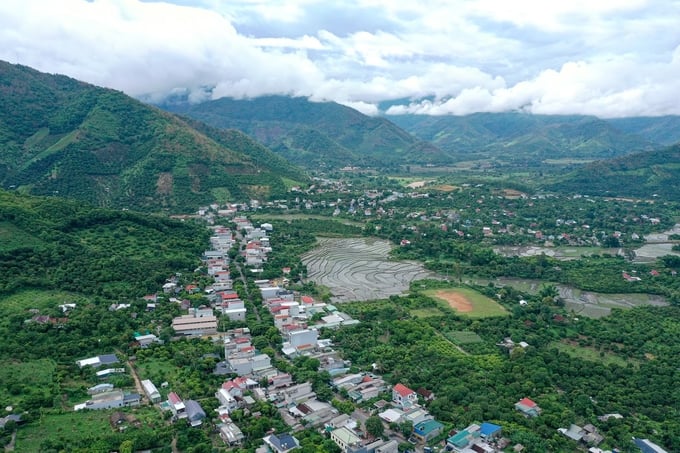
A view of Chieng Khuong commune (Song Ma district) today. Photo: Tung Dinh.
The headquarters of Chieng Khuong commune is located on a hillside, at the foot of the historic Muong Hung mountain range. It is surrounded by fruit trees, and in front of it lies the turbulent Ma River. In the distance, fruit orchards from the riverbank are stacked up on the hilltop. If Son La province is often called the land of the steeps, Chieng Khuong is like one of many other border highlands, remote and full of hardship.
Commune Chairman Lo Van Loan, a Thai man in Chieng Khuong, sipped a cup of tea and reminisced about the past. “In 1965, people from the lowlands came up to help the people open the land and plant host trees for keria lacca. After the subsidy period, the forestry farms were dissolved, and people rushed to grow corn. But because it was mainly mountainous and steep terrain, the soil was washed away after every crop. Combined with the habit of using fertilizers and chemical pesticides indiscriminately, many swidden fields became dead land, completely devoid of fertility and nutrients. Luckily, we knew how to change things soon”.
Chieng Khuong today is not only the fruit “capital” of Song Ma district with an area of approximately 1,000 ha but also the first highland border commune of Son La province to reach the “new countryside” finish line.
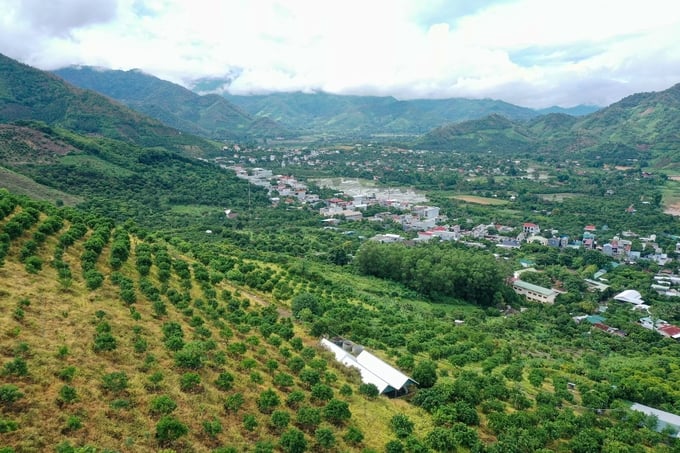
The sloping land of Chieng Khuong. Photo: Tung Dinh.
More than 10 years ago, when Son La province initiated a policy of converting the crop structure on sloping land, Chieng Khuong, a border highland commune, was among the pioneers. With support policies and guidance from scientists from the Vietnam Academy of Agricultural Sciences, the whole highland region embarked on a new journey.
The first step was to improve the corn growing area, and encourage people not to burn dead plants to cover the soil, both to retain water and create humus. The steep hillsides were made into small terraces to limit leaching and erosion, and the soil was also covered with available plant residues. Next was to change farming methods, promote the use of organic fertilizers, increase soil porosity, and apply technical solutions to both save costs and revive steep lands that seem no longer suitable for cultivation.
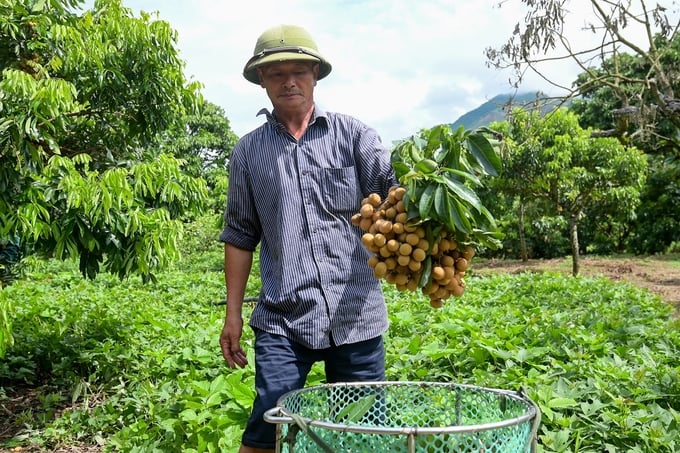
Longan billionaire Bui Van Quang. Photo: Tung Dinh.
The longan hill of over 10 ha belongs to the family of Bui Van Quang, a billionaire who grows longan in Quyet Thang village, stretching far to the mountainside along the Ma River. “In the past, the land was used to grow corn and forestry trees, which was very hard work but yielded little. Since it was sloping land, we could only grow one crop, and after the rainy season, we have to pour countless amounts of fertilizer just to be able to grow the next crop,” he said.
After switching to fruit tree cultivation, the family's life has turned for the better, the people are healthy, and the land is livelier than ever. Quang and his wife convert 10 ha of longan into terraces, plant more low-canopy trees, and only occasionally cut grass to cover the roots, both to maintain moisture and humus for the soil and to add microorganisms as a form of organic fertilizer.
Each year, Quang's family normally harvests 100 tons of longan. As for this year, the hot weather has lasted for a long time, the fruit set rate is not high, but thanks to the record high selling price (more than VND 50,000/kg), they have pocketed more than VND 3 billion.
“The change in the sloping land in Chieng Khuong is truly a revolution,” said Nguyen Tien Hai, Vice Chairman of the People’s Committee of Song Ma district. From the “spark” of Chieng Khuong, Song Ma has now become a large fruit growing area of Son La province with an area of approximately 11,000 ha. From Chieng Phung, Huoi Mot, Na Nghiu to Nam Man, each area of sloping land now has large fruit orchards with an output of nearly 50,000 tons/year, exceeding the plan and target set by the Party Congress of Song Ma district.
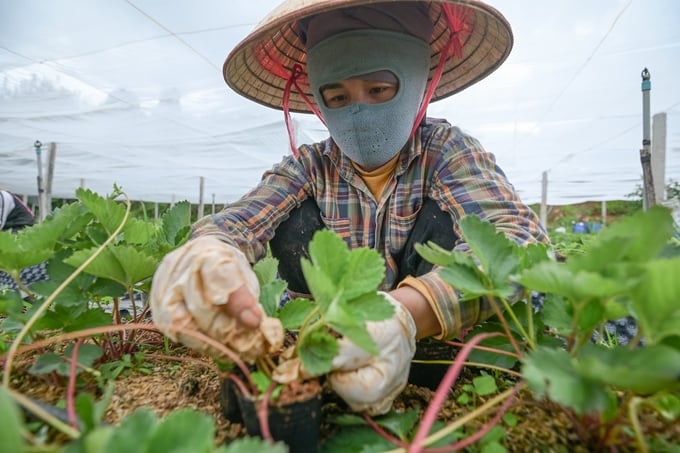
Many sloping areas in Son La currently grow fruit trees, bringing in billions of dong per hectare each year. Photo: Tung Dinh.
Not only in Chieng Khuong or Song Ma but also in Mai Son, Yen Chau, Thuan Chau and many other sloping areas in Son La, the green of fruit trees, coffee and tea and the green of forests have gradually replaced the previously barren corn fields.
“The revolution on sloping land has now spread to the most remote areas. It has birthed some outstanding models, including the fruit growing model of Bui Van Loc, Director of Bao Khanh Construction and Agriculture Cooperative, which can harvest 4-5 tons of Thai custard apples a day, selling them for VND 100,000/kg. Another mention is the model of Director of Tan Thao Cooperative Nguyen Dinh Lam who grows strawberries and earns VND 1 billion/ha,” said Ha Nhu Hue, Director of Son La Department of Agriculture and Rural Development.

Custard apples on sloping land in Mai Son. Photo: Hoang Anh.
Son La is now focusing on promoting the development of growing area codes. As of June 2024, the province is maintaining 218 growing area codes and 10 packing facility codes, of which 211 codes are for exports to China, Australia, and the USA with a total area of over 3,000 ha. A series of typical products have been granted certified labels such as "Song Ma Longan", "Son La Longan", "Son La Pineapple", "Son La Mango", "Son La Dragon Fruit", and "Son La Plum".
“Son La is gradually shifting strongly to build a green and clean agriculture by applying high technology. With an annual cultivation area of more than 200,000 ha mainly on sloping land, fertilizing the land is the number one mission to realize that ambition,” said Director Ha Nhu Hue.
Translated by Samuel Pham
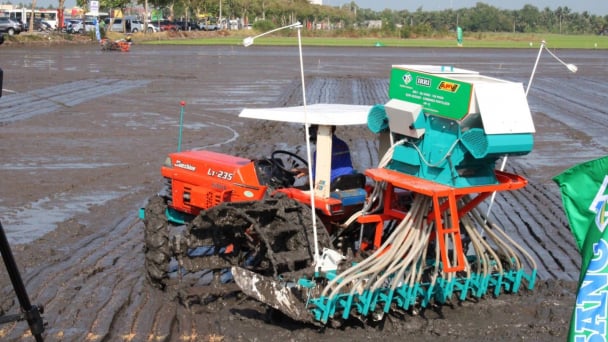
(VAN) The German Agricultural Society (DLG) explores the possibility of establishing a mechanization service center in Vietnam’s Mekong Delta to support farmers in accessing and utilizing advanced machinery.
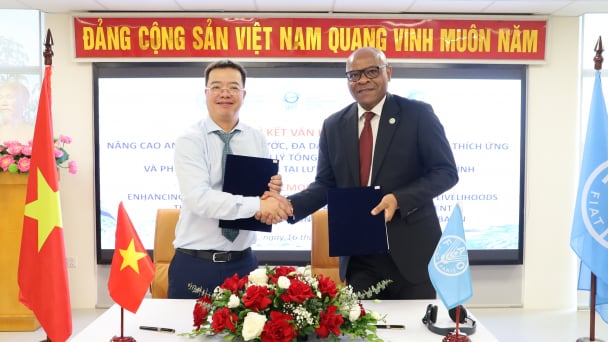
(VAN) On May 16, the Department of Water Resources Management, in collaboration with the Food and Agriculture Organization of the United Nations (FAO), held a signing ceremony for the GEF-8 project document.
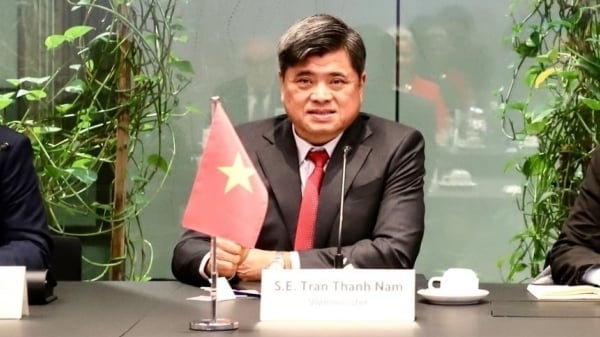
(VAN) Food safety, mechanization, vocational training, and market opening are key areas of cooperation expected between the Vietnamese Government and the Federal Republic of Germany.
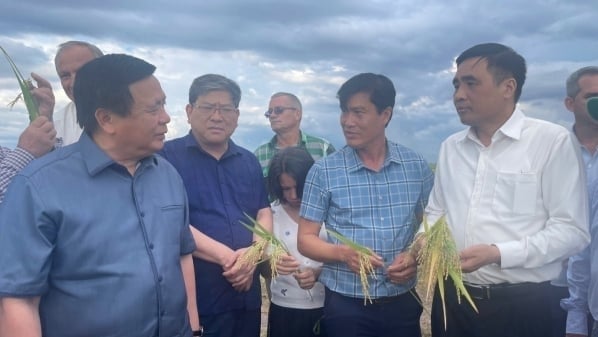
(VAN) Deputy Minister Nguyen Quoc Tri also expressed his hope that Cuba will soon overcome its current challenges, attain food security, and further expand cooperation with Vietnam.

(VAN) The project contributes to enhancing the resilience of communities vulnerable to the impacts of climate change, with a primary focus on local women.

(VAN) Green materials help save energy and resources. However, after more than 10 years, Vietnam has only developed over 200 green buildings with more than 6 million square meters of floor space.

(VAN) Vietnam - Thailand Business Forum 2025: One plus one on three connects, marking a milestone in the comprehensive strategic partnership between the two nations.